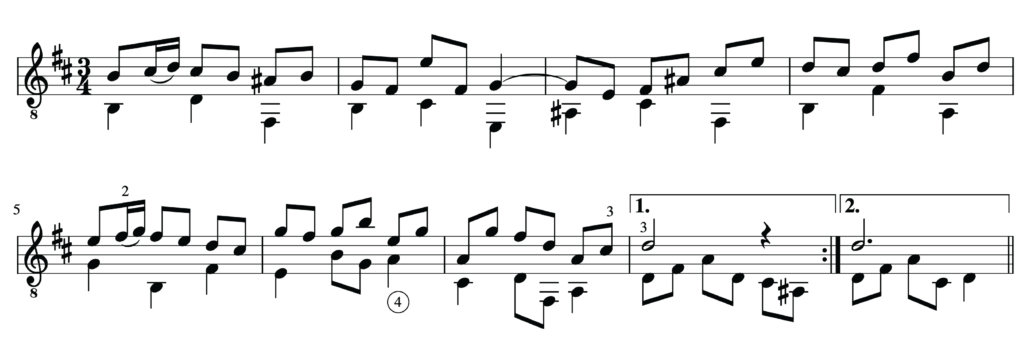In order to play a piece of sheet music you must be able to read the notes on a staff (stave). The staff consists of five lines and four spaces stacked on top of each other.

On these lines and spaces we can then write notes. Depending on which clef is placed at the beginning of the staff will determine what each of these notes are. Make sure that you are confident with your musical alphabet as each of your note names will be from this. Learn more about clefs with our complete guide.


As you can see, the staff only consists of five lines and four spaces but if you look at a piano we can quite clearly see there are more keys than we have notes on the staff. Even if we use the grand staff there are still more keys on the piano than we have on the staff.

The grand staff is simply two sets of five lines, one on top of the other. The top line will have the treble clef and the bottom lines will have the bass clef.
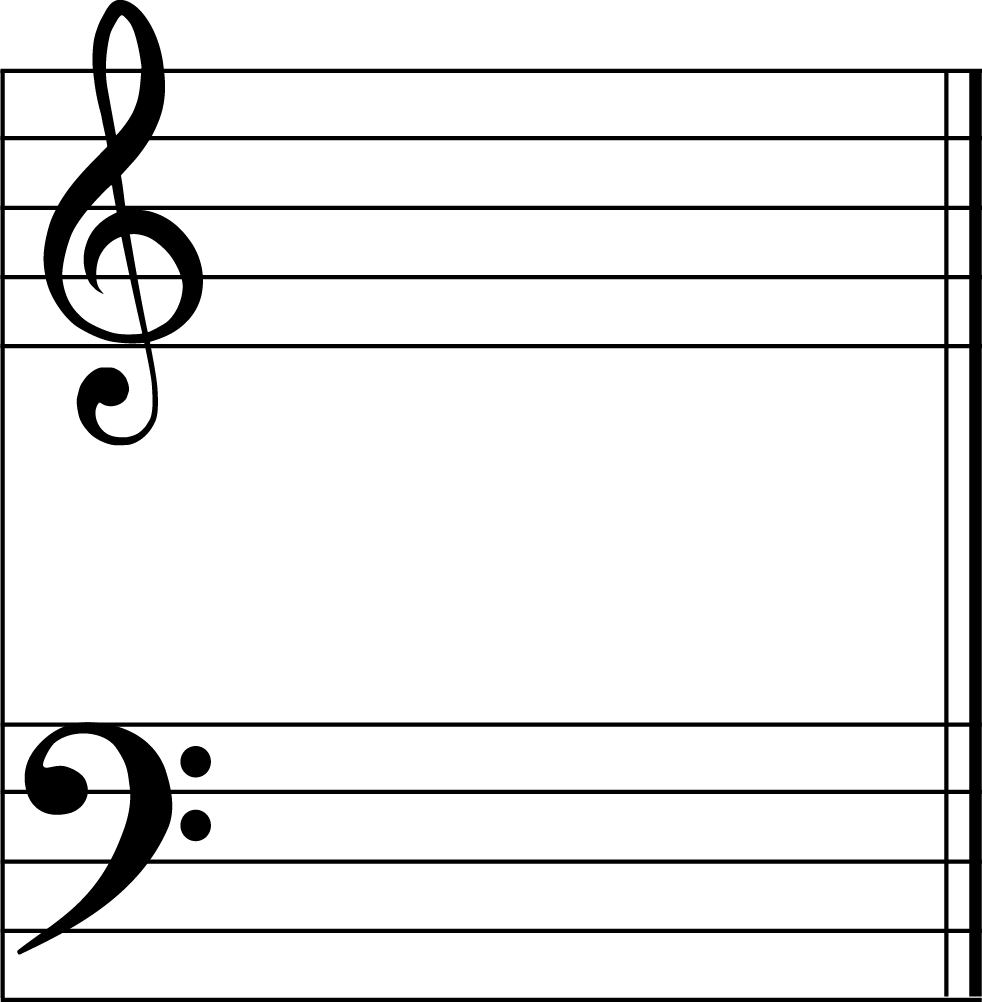
What are ledger lines?
In between these two staffs, there is one extra note that isn’t on the main lines, this is a line note and is in fact called, middle C. The name middle C is very accurate as it literally means the C right in the middle of the treble and bass clef. The extra little line that has been put through the middle is called a ledger line!
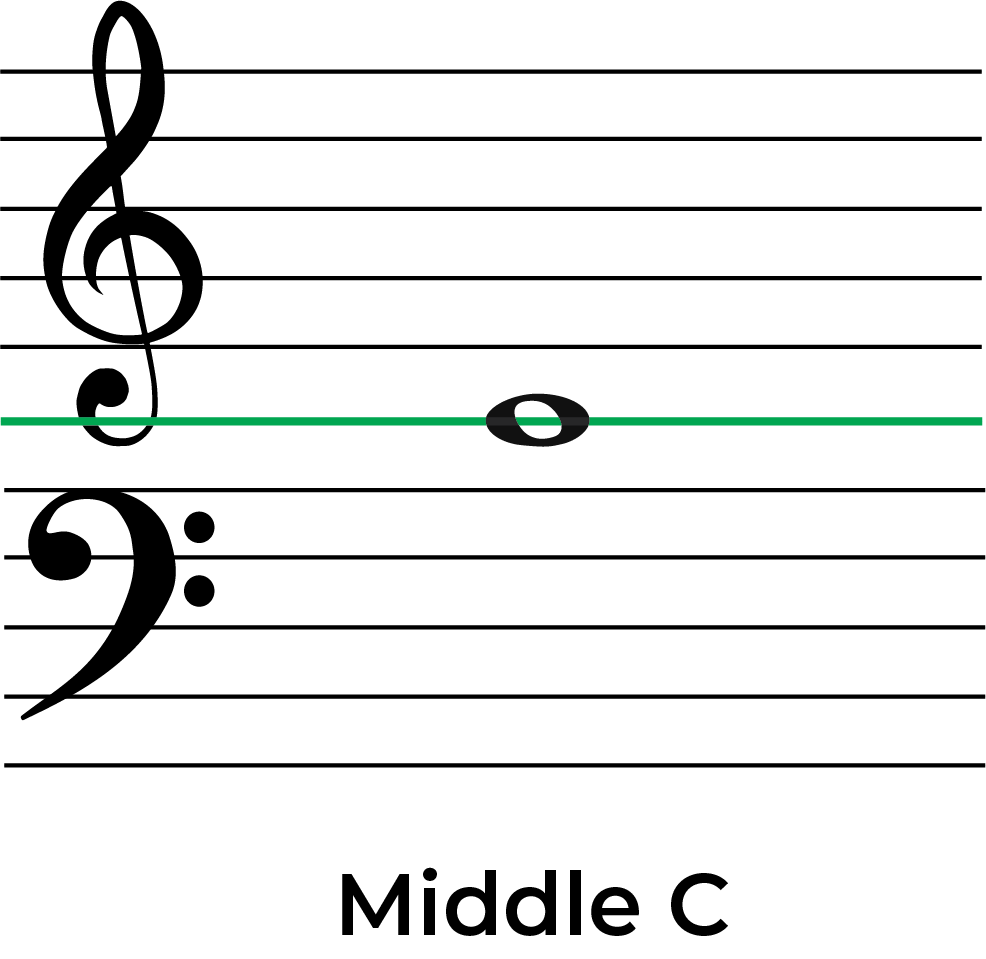
Ledger lines aren’t just for when you want to write a middle C, they are also used for any notes that fall outside of the main lines on the staff. Whether these be above or below the staff.
Ledger lines – Bass and Treble clef
Although ledger lines can be used in all clefs, we will focus on the treble and bass clefs first.
As seen, a ledger line is simply any line that is not one of the lines on the staff. Ledger line notes are used to extend the range of notes that can be written on the music.
Ledger lines treble clef
If we look at the treble clef, without ledger lines, we will only be able to go to a G above the stave.
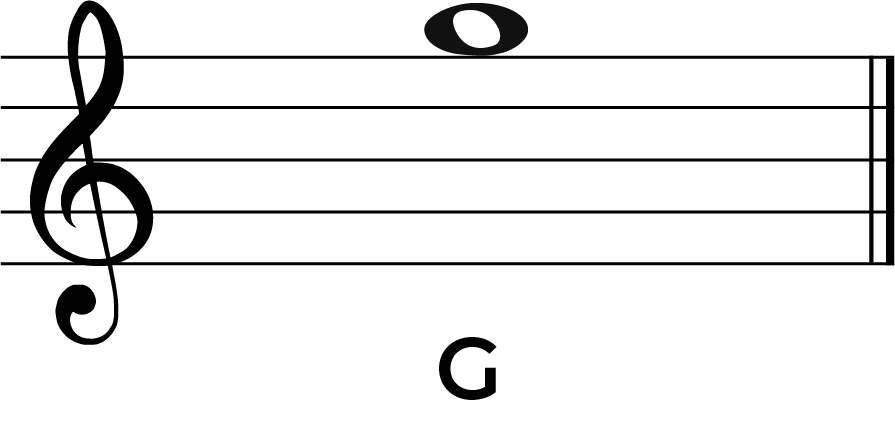
If we want to play notes that are higher than this, we will need to add ledger lines.

The trick to reading ledger lines quickly
Above you can see the notes A (one ledger line above the stave), B sat on top of this extra ledger line, two ledger lines for the note C etc.
The trick to reading ledger lines quickly is to be really aware of your musical alphabet. The letters in music always follow the musical alphabet and always stay in this order.
A B C D E F G
By following this order of letters you can then quickly and easily work out what the notes on the lines are. The pattern also follows the same as in the staff, line and space notes.
The first ledger line will be the note A, sat on top of this will be the note B, add a second ledger line and we will have the note C etc.

Ledger lines below the treble clef
It is also possible to use ledger lines to go below the stave as well. We have seen above that middle C uses one extra ledger line at the bottom of the staff but we can also continue going down. The note hanging just below the first ledge line is a B, if we have two lines, this will be the note A etc.

Using these ledger lines at the bottom of the treble staff however could easily just be replaced by the bass staff. The extra little lines are simply the bass staff lines!

The only true ledger line between these two staffs is the middle C line as you can see above.
Ledger lines bass clef
Ledger lines are used in exactly the same way in the bass clef staff. We have seen that the middle C line for the bass clef is written at the very top of the stave. Any extra ledger lines added above this will simply be the treble clef notes!
The ledger lines used below the bass clef are where they come in most handy as these are for very low notes. Working out what these notes are is easy, you simply follow the same pattern we have seen. Use the musical alphabet!
Right at the bottom of the stave we have the note F, to go lower we add the small lines. The first ledger line will be the note E, hanging below this line will be the note D, if we have two lines we then have the note C and it goes on!

How To Avoid Multiple Ledger Lines
Avoiding multiple ledger lines in the treble clef
Using the bass clef when writing low notes in the treble clef is a great way to avoid having multiple ledger lines. By replacing the ledger lines with the bass staff it makes the notes easier to recognise when reading music as you don’t have to count lots of little lines.

Avoiding multiple ledger lines in the bass clef
We also have two other clefs that are sometimes used when trying to avoid having several ledger lines, particularly in the bass clef and these are the alto clef and the tenor clef.
Both the alto clef and the tenor clef are alternative clefs that move the placement of middle C, meaning that depending what notes you need, you can avoid ledger lines. Learn more about the alto and tenor clef.
The tenor clef is often used for instruments such as the trombone when they need to play higher notes. Usually the trombone uses the bass clef and so this is an easy way to avoid lots of ledger lines in the written music.

How to read ledger lines in both the bass clef and the treble clef
Unfortunately there is no real trick, but if you are confident with your musical alphabet and the order that notes go in it is easy to figure out what the notes are.
It is also important to give yourself a reference note, a note on the musical staff that you are really confident with. For example, in treble clef this could be middle C at the bottom of the staff or a high G at the top!
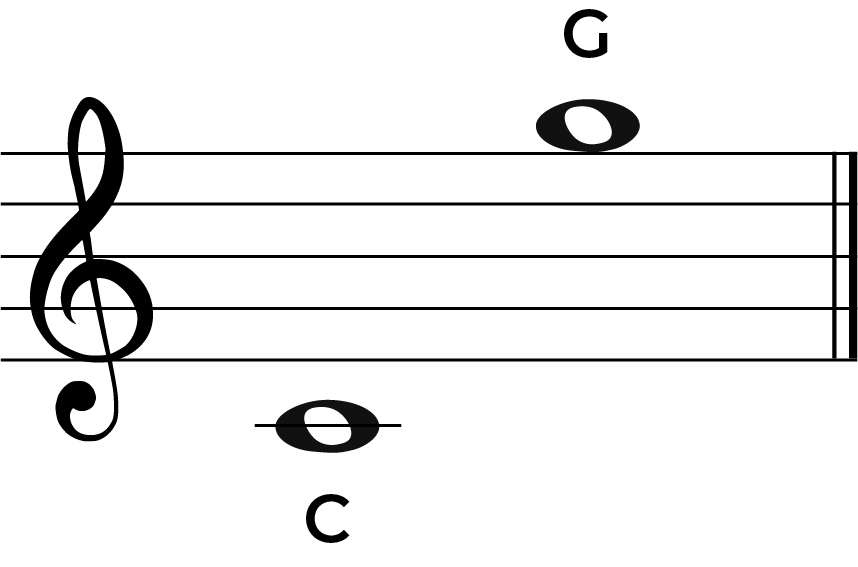
In the bass clef this could be middle C, the F between the dots or even the low G at the bottom of the staff.
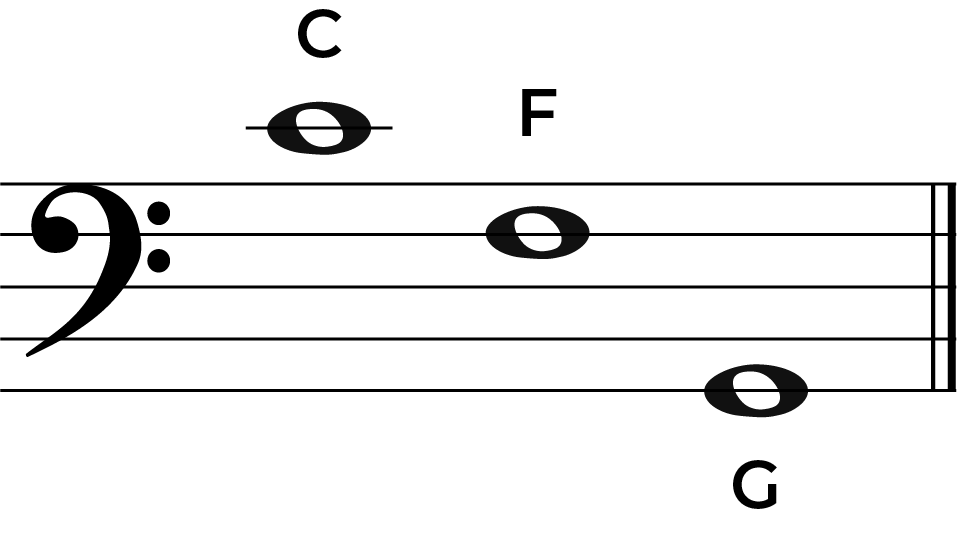
The important thing to remember is that reading ledger lines takes practice in order to identify what the note is quickly. But if you remember the order of your notes and musical alphabet you can always work them out!
Sight reading ledger lines
Make sure to look at what ledger lines are most common for your instrument. For example, a flute player will never use the bass clef and therefore it is completely unnecessary to practice reading ledger lines below the bass staff quickly as you will most likely never have to do this in practice.
Once you know what is most common for your instrument then you can make sure that you read ledger lines specifically for your instrument. The more you read music like this the fast you will get at sight reading them!
